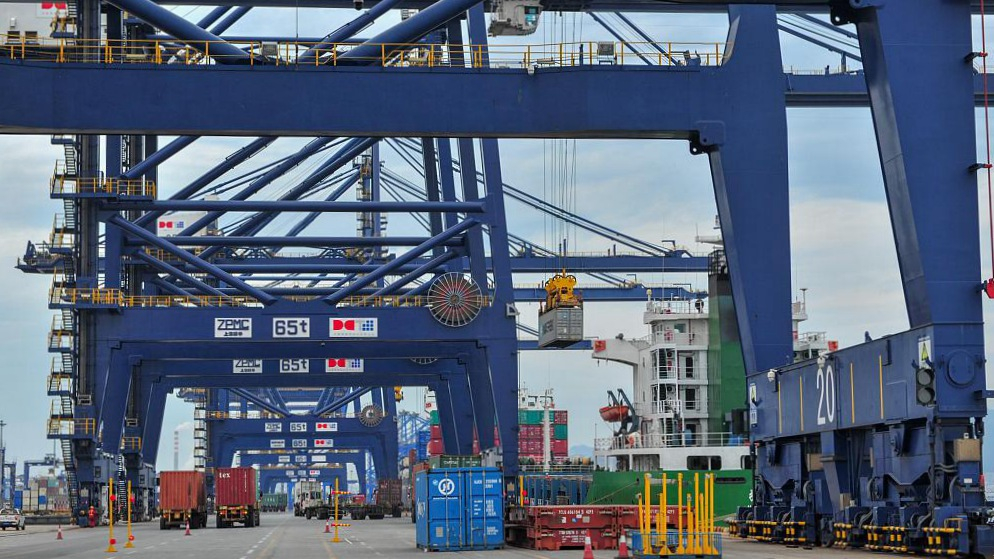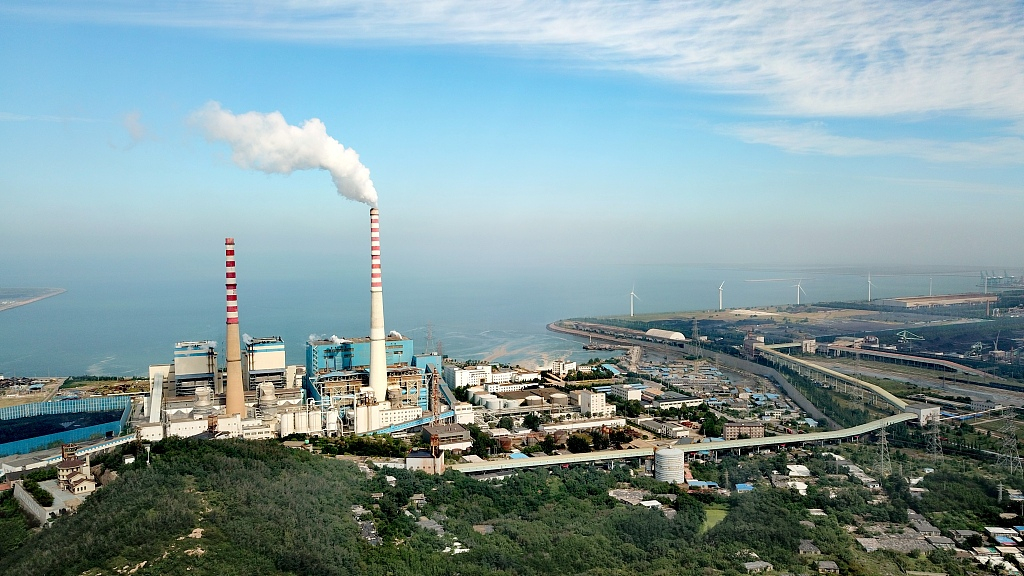04:02

Shipping is the lifeline of global trade, and ports play an important role in regional development. Liaoning province in northeast China has long been counting on its coastline to drive new business amid sluggish growth.
In Dalian, Liaoning's largest port and one of China's first coastal cities to open up to the world, a considerable portion of the region's foreign trade goods flow in and out through its busy container terminals. And Dalian is now set for further expansion.
"We positioned ourselves as a international shipping center in Northeast Asia, and we will continue to attract goods from southeastern Chinese coastal cities to Dalian, focusing on the burgeoning Russian market, and developed South Korean and Japanese markets," said Xia Ting, manager at the business development department of Dalian Port, a subsidiary of the newly founded Liaoning Port Group.

Dalian Port in Liaoning Province. /VCG Photo
Dalian Port in Liaoning Province. /VCG Photo
Earlier this year, Liaoning created a new company to run its major ports, with the state-owned China Merchants Port Holdings holding a controlling stake. The port-to-port integration laid the ground for ports in Liaoning to realize their ambition by better carrying out development strategies like sea-rail transport, intelligent port development, and market expansion.
Over the past five years, China has opened several freight train routes connecting Dalian Port to European cities. And cargo transport capacity has grown by over 70 percent a year on average for the last five years.
Goods shipped to Dalian port are unloaded at the container terminals and transferred onto trains bound for Europe. It is said that containers leaving the Port of Dalian now will arrive in Moscow in just a third of the time traditional waterways take.
The unified operation platform has also brought about new opportunities to another group member — Liaoning's Yingkou Port. It's the biggest domestic trade container hub port in northeast China and also an important transit port for China-Europe sea-rail transportation. Li Yang, deputy general manager of Yingkou port's container terminal said the newly established unit has turned competition into cooperation.
"That will boost our efficiency by improving overall services. We have the same goal within the Belt and Road Initiative," Li said. Yingkou port and its Russian partners are currently investing and building a logistics center outside Moscow, which is expected to be operational by the end of 2020.

Yingkou Port in Liaoning Province. /VCG Photo
Yingkou Port in Liaoning Province. /VCG Photo
With more ports expected to join the group, Liaoning plans to further expand its links and strengthen contact with its trading partners. The region is expected to continue benefiting from this.
Angang Steel is one of the largest steel makers in China and it opened a branch in Yingkou to chase after new markets. Wang Jun, manager of the branch, said mines and raw materials are all imported at Yingkou base as it has a logistical advantage. "We need to transport steel plates for vessels and bridges, which are too big for railway or highway transportation. Now we can go straight up to the docks and send them all over the globe," Wang remarked.
Meanwhile, Liaoning is developing its pilot Free Trade Zone (FTZ) to attract more foreign companies and investment. Zhang Hongguang, deputy director of management of committee of Dalian Area of the FTZ, said they want Dalian to become northeast Asia's industrial base and an engine for opening-up and cooperation.
The establishment and development of Liaoning Port Group is an example of the nation's efforts to integrate ports and diversify. Managers in Liaoning's port areas said future development will closely follow China's current economic transition — from quantity to quality, from being production-driven to consumption-driven, from export-oriented to a balance between imports and exports. And they are confident these efforts will pay off.